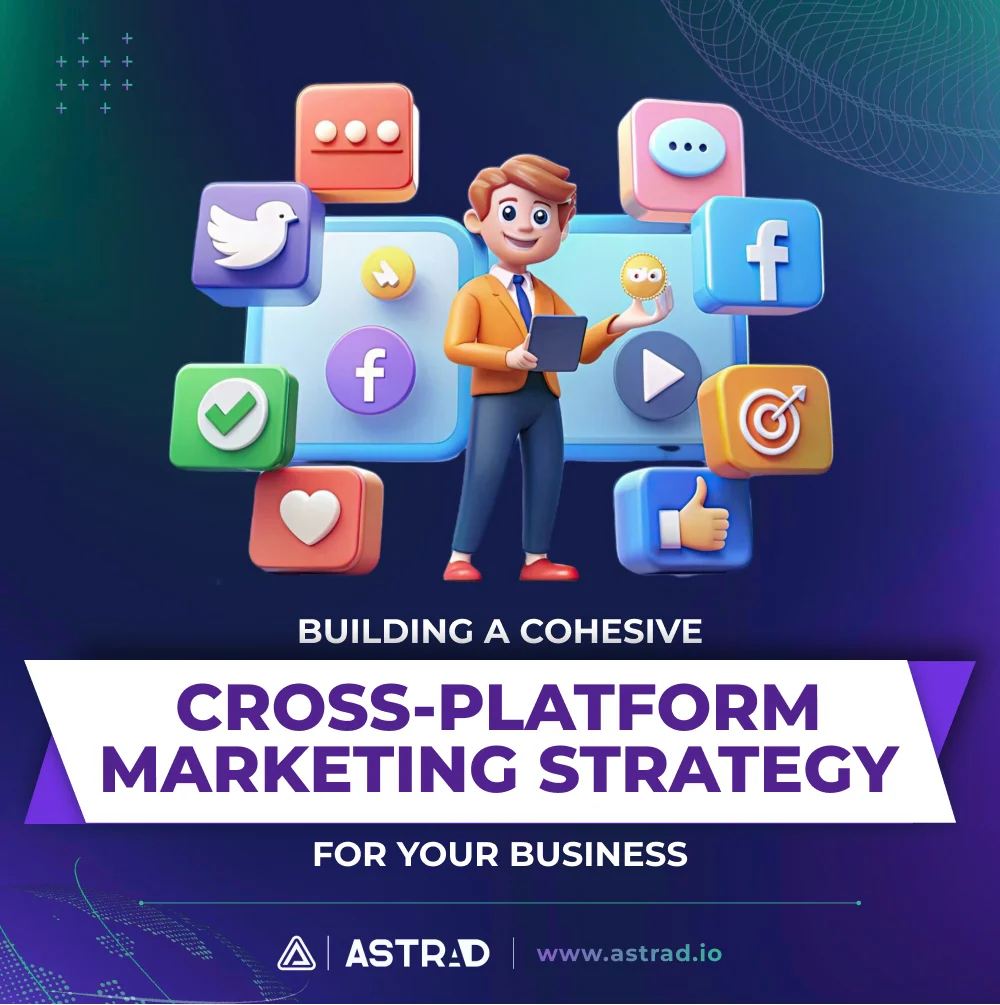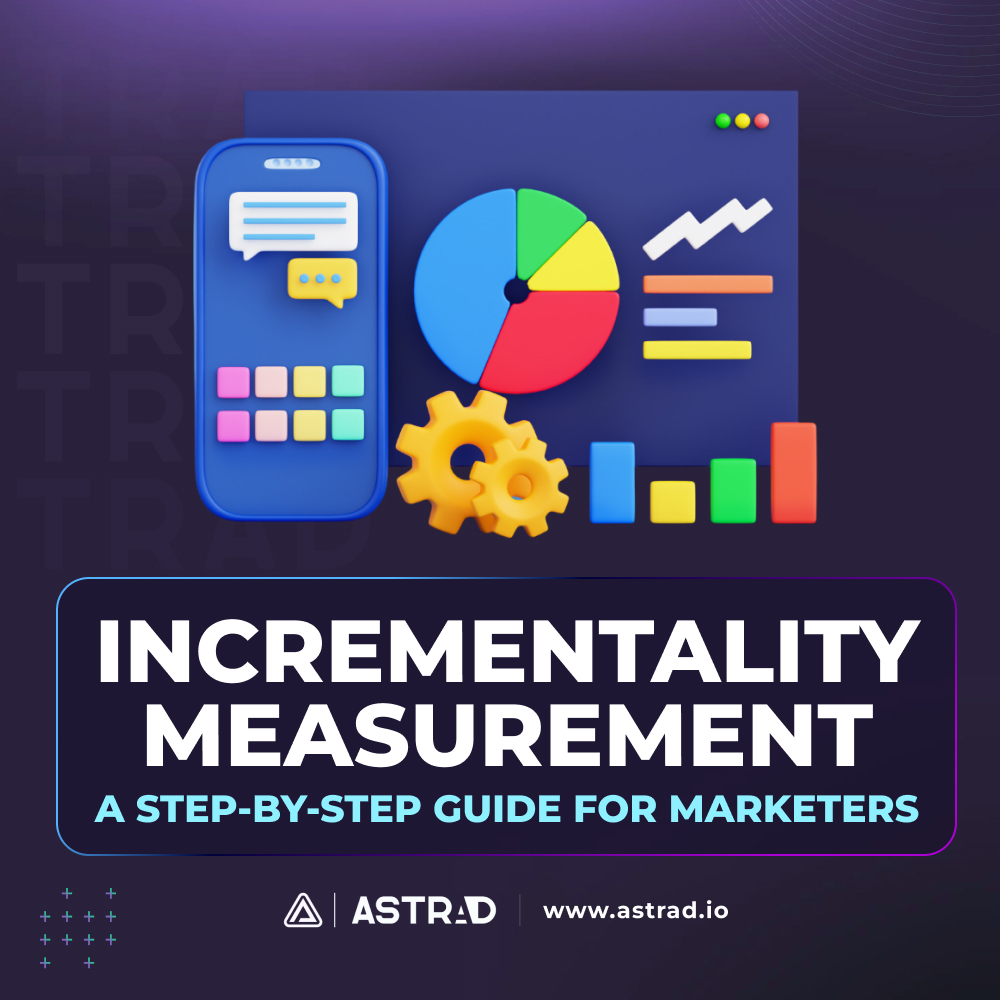Are your marketing efforts scattered across the digital universe—like mismatched socks in a hamper? Everything is there but somehow not clicking or linking up. Why is that website one color while your Instagram feed is another?
It’s time to bring it all together with a cohesive cross-platform marketing strategy—a strategy that’ll make your brand shine brighter than a supernova. Consistency is critical in today’s fragmented digital landscape, and a well-crafted cross-platform strategy is the way to achieve it.
The Power of Cohesion in Cross-Platform Marketing
In the multi-platform reality we call home, a consistent message isn’t just nice to have—it’s vital. People need to feel that everything makes sense. Your website should reflect your brick-and-mortar store experience, for example. This builds trust, reinforces brand identity, and makes your marketing efforts more effective.
Studies back this up—90% of consumers expect a consistent experience across all platforms. Whether someone stumbles across your brand on Instagram, Facebook, or your website, they should get the same voice, visuals, and vibes. Consistency breeds trust, and trust? That breeds customers. A unified cross-platform marketing strategy ensures this consistency across the board.
How Cross-Platform Marketing Drives Results
A unified approach is about more than just looking good and sounding like Prince Charming—it’s about driving results. Brand recognition increases by up to 80% when you implement a cohesive cross-platform marketing strategy, according to research from Lucidpress. It also boosts engagement and conversion rates, making it easier for customers to follow your breadcrumb trail across various platforms.
Plus, it allows you to repurpose content—saving time and money while keeping your message strong and clear. Implementing a solid cross-platform social media strategy is a game-changer in the digital marketing landscape.
Crafting Your Cross-Platform Masterpiece
Understanding Your Audience
Before you can dazzle them, you need to know them. In-depth audience segmentation is critical here. You have a niche, and that niche has an identity—it’s like how kids go insane over Hot Topic or how some folks define their lives by quoting Star Wars. Or how once some people go to Keto, they can’t stop talking about it. Coming to terms with what type of person—at their core—your advertising is targeting is critical.
According to Google Analytics, 80% of consumers are more likely to engage with a brand when they feel understood. Crafting detailed personas isn’t just marketing fluff—it’s a way to tailor your message to meet the needs of different audience segments. The more specific you get, the easier it’ll be to hit the right note on each platform. This is crucial for an effective cross-platform marketing strategy that resonates with your audience.
Choosing the Right Platforms
Not all platforms are the same—each has its audience. You don’t need to be everywhere, but you do need to be where it matters. Here’s a pro tip: 85% of Pinterest users are women, while LinkedIn is favored by professionals with higher incomes. Facebook? It’s favored by folks who were in their teens during Bush Jr.’s presidency. Choose platforms based on your audience’s preferences and behaviors.
Focusing on critical demographics and platform strengths is the critical factor for an effective cross-platform strategy. Whether it’s social media, email marketing, or other channels, your cross-platform social media strategy should prioritize the platforms that align with your target audience.
Crafting a Unified Brand Message
Your brand voice and visual identity have to be as recognizable as a catchy song—as familiar as the Roseanne theme. Across all platforms, consistency matters. A study by Lucidpress found that consistent branding across channels can increase revenue by up to 23%.
Same logo, same tone, same message—wherever your audience finds you, they should feel like they’ve just stepped into your brand’s universe. This also means using standardized taglines, color schemes, and visuals in your cross-platform marketing strategy.
It also means getting that image across all touchpoints—when you step into an Apple store, it feels like you’ve entered their website. The same goes for Nike, Samsung, and even Hot Topic.
Content Strategy Across Platforms
Your content calendar needs to exist—period. It has to be predictable, like a new season of The Simpsons. You know when it drops, and you know that it will have a Halloween Special. And this has been written in stone for over 30 years. Creating platform-specific content is key, but your core message should remain consistent. For instance:
- Short-form videos for TikTok—where the average user spends 95 minutes a day.
- In-depth articles for LinkedIn—where 91% of executives say they prefer professional content.
- Stories for Instagram—where over 500 million users interact with stories every day.
It is tailoring your content to fit the platform while maintaining a unified message? That’s the sweet spot. This approach enhances your cross-platform social media strategy, ensuring each platform is leveraged to its fullest potential.
Leveraging Technology in Cross-Platform Marketing
Time is money, and in cross-platform marketing, automation tools are your best friend. Tools like Hootsuite and Buffer allow you to schedule posts, monitor analytics, and keep your campaigns running smoothly.
According to HubSpot, businesses that use marketing automation see an average 451% increase in qualified leads. Letting the robots do the grunt work frees you up to focus on strategy and creativity—where you can really shine in your cross-platform marketing strategy.
Integration of Social Media Strategies
Social media is the lifeblood of your cross-platform strategy. A survey by Sprout Social found that 64% of consumers want brands to connect with them on social media. Tactics like social listening, prompt responses, and interactive content like polls and Q&As will turn casual scrollers into brand loyalists. And don’t forget to analyze platform-specific insights to refine your cross-platform social media strategy.
Measuring Success and ROI
If you’re not tracking, you’re guessing. Defining key performance indicators (KPIs) like engagement rates, conversions, and ROI is essential to knowing what’s working. Here’s a stat to keep you on your toes: only 29% of marketers can effectively measure ROI across all platforms.
Don’t be part of that statistic. Use analytics tools to track your success, whether that’s via website traffic, customer acquisition costs, or conversion rates. Continuous improvement is how you keep winning with your cross-platform marketing strategy.
Overcoming Challenges in Cross-Platform Marketing
Common Pitfalls and How to Avoid Them
Inconsistent messaging, platform overload, and a lack of analytics—these are the boogeymen lurking in the shadows of your marketing strategy. Sixty percent of marketers cite inconsistent brand messaging as the biggest challenge in cross-platform marketing. Stay vigilant and adaptable. Recognizing these pitfalls and adjusting your approach is the only way to keep your cross-platform strategy strong.
Importance of Continuous Adaptation
The digital landscape is more volatile than the latest Grey’s Anatomy episode—full of plot twists and bizarre love triangles. Algorithms change, trends come and go, and your strategy needs to flex with the times.
But here’s the upside: companies that actively adapt their marketing strategies see a 13.3% increase in year-over-year revenue growth, according to the CMO Council. Stay updated on platform changes, algorithm updates, and emerging trends to keep your cross-platform marketing strategy sharp.
The Road Ahead—Adapt and Thrive
Creating a cohesive cross-platform marketing strategy isn’t a one-and-done deal. It requires continual adaptation and staying updated with platform changes. But the long-term benefits—a strong brand presence, increased engagement, and higher conversions—are worth every effort and headache. So here’s a great pro tip: Stay flexible.






